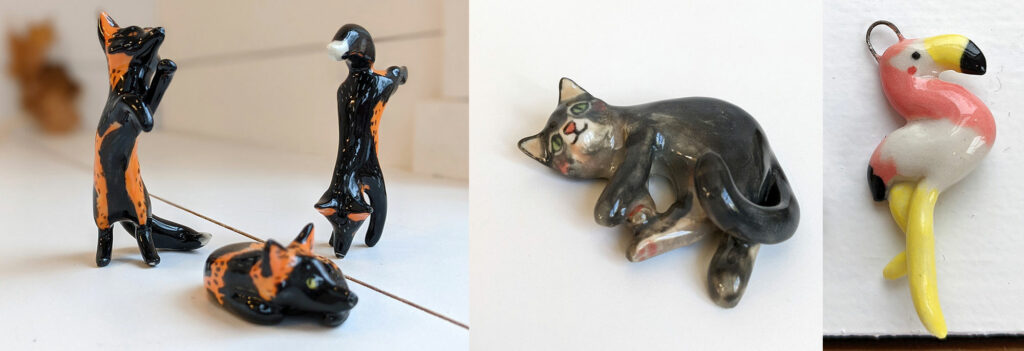Ceramics blog, Illustration Blog
Commissioning Art : A 5 Steps Guide To Your First Custom Piece
Looking for a truly unique piece of art for your home or office? I offer art commissions in both ceramics and illustration. We’ll work together to bring your vision to life, from initial sketches to the final artwork. Whether you have a specific subject in mind or just a general idea, I’m happy to discuss your project and create a custom piece you’ll cherish for years to come.
So, you’re thinking of commissioning art and you have no idea where to start. Here’s a guide to commissioning art in general and custom ceramics in particular. I’ll cover the dos and don’ts, art commission pricing and steps of commissioning art from me or most other artists online. Let’s go !
What’s commissioned art ?
Before we cover the basics, let’s define what commissioning art means. Commissioning an artist is asking them to create a piece of art for you for a fee, following the rules stated in their info page. It can be a new piece, a portrait, a piece that they already made and sold out. Commissioned art can take a lot of forms, it can be a digital art commission, physical, a piece of writing, a painting or a sculpture. Commissioned art is usually for a private use : to read, gift, frame and hang on a wall or collect.
I can do ceramics figurines, pendants, tableware, and watercolor paintings. Other artists will be available for one type of work and not the other, they will list what they do in their art commission page.
1 – Art Commissions : Your part of the Work
The first important thing for commissioning art is to actually know what you want, more or less precisely. Before commissioning an artist, you should be aware of :
- what your artist does
- what your artist doesn’t do
- what you’d like
- their price range
Don’t worry about not letting room to interpretation, there always is enough if you’re familiar with your commission artist’s work. You can commission a piece without knowing all the details, for example one of my latest commissions was : an antlered platypus figurine. The color wasn’t specified, not the position, my customer let me figure that out.
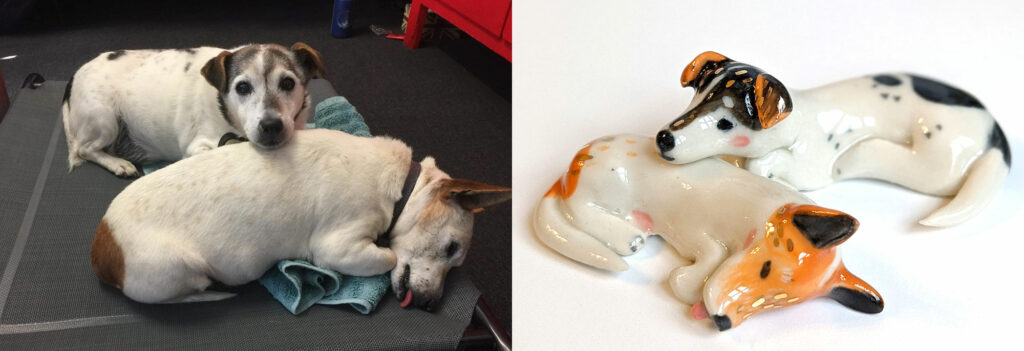
I value an informed customer : one should know a little bit about my work before asking for a custom piece of art. If you just send an e-mail asking me for a giant planter or a life-size porcelain sculpture of your baby, I’m thinking you probably knocked on the wrong door ^^
Your artist is usually a kind human being and if you need to ask questions, don’t be afraid to. If you read the art commission rules and your question is not covered, we’ll be happy to answer. And if it’s been covered, we’ll either redirect you if it’s a long answer 🙂
2 – Check commission availability ahead of time
If your artist of choice communicates it, you might already be aware that they will take commissions on certain dates and in a limited amount. Check them out regularly on social media, and better : subscribe to their mailing list. My mailing list subscribers are always the first to know about commission openings.
If you send a request outside of my commission opening dates, I will probably answer when they open but your e-mail can also get buried under the dozen I get each day. If I’m caught in something, like shipping or if I’m taking time off, chances are I will forget about it. That’s why it’s important to try and respect commission openings.

3 – Read all the information
There’s often a lot to read in a commission page. This is not an extra annoying step we artists like to make painful or anything : it’s just that over time, we cover more and more specific cases and regularly answer the same questions. Reading all the info will answer most of your questions ahead of time !
Your artist is usually a kind human being and if you need to ask questions, don’t be afraid to. If you read the info page and your question is not covered, we’ll be happy to answer. And if it’s been covered, we’ll either redirect you if it’s a long answer or write a short reply.
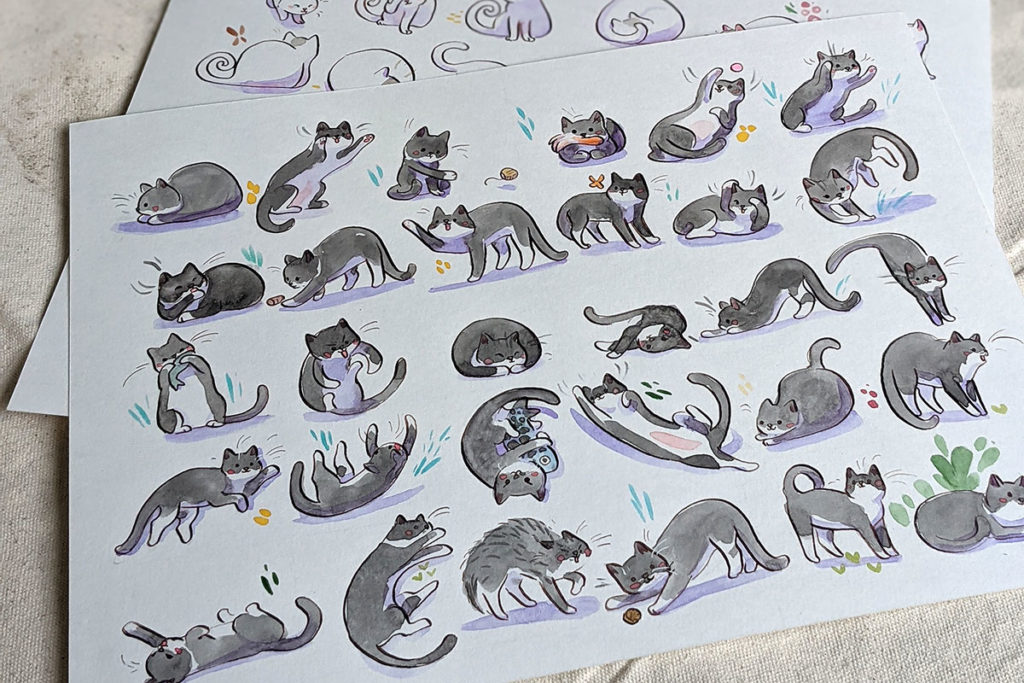
4 – Provide a good reference sheet
One of my favorite things to get is a nice detailed e-mail that’s both short enough that I don’t lose focus, and long enough that I have all the info. And just above that would be a reference sheet with all the pictures and important details in one document.
Here’s an example of a reference sheet that I made for my dog to show the main points and features I’d like included in a commission. Plus, it’s really fun to make, like a little character sheet 🙂 You can include personality traits, fun habits, name meaning. Everything helps me get a hold of your pet and add that little extra touch that makes them so special.
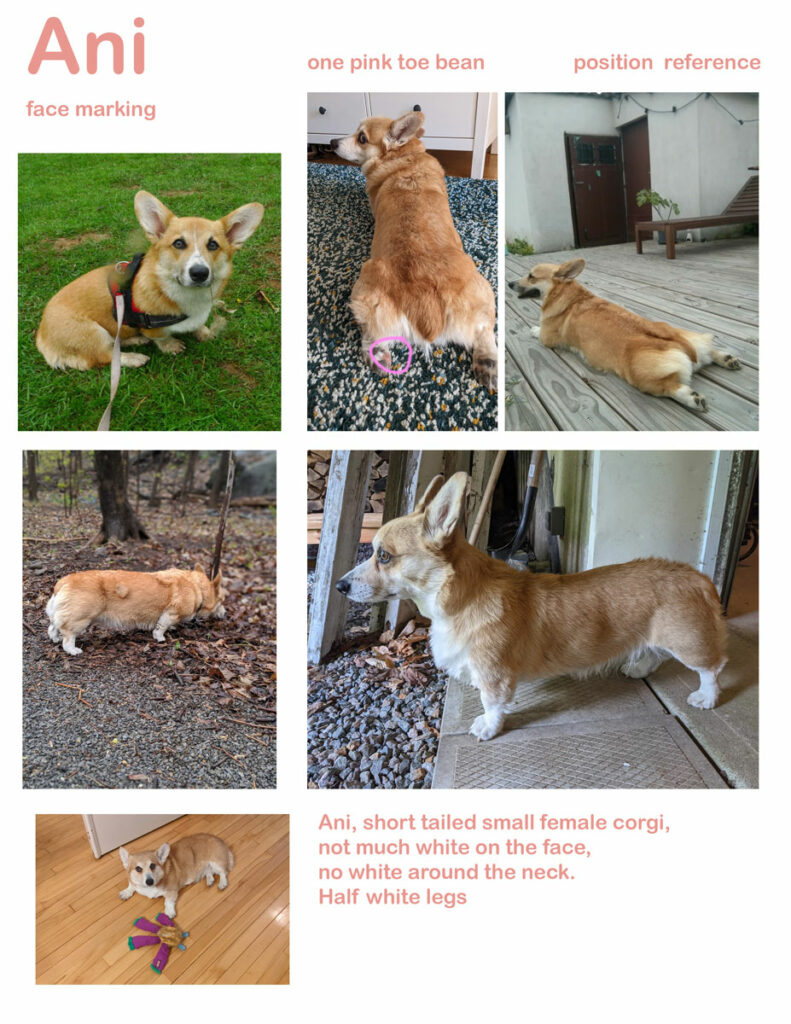
Here you can see both profiles, a portrait and back views, as well as the position I’d like my figurine sculpted. I added important details, like the face markings and the pink toe bean. I don’t expect every customer to come up with a detailed sheet like this, don’t worry. A few pictures and an e-mail are also good.
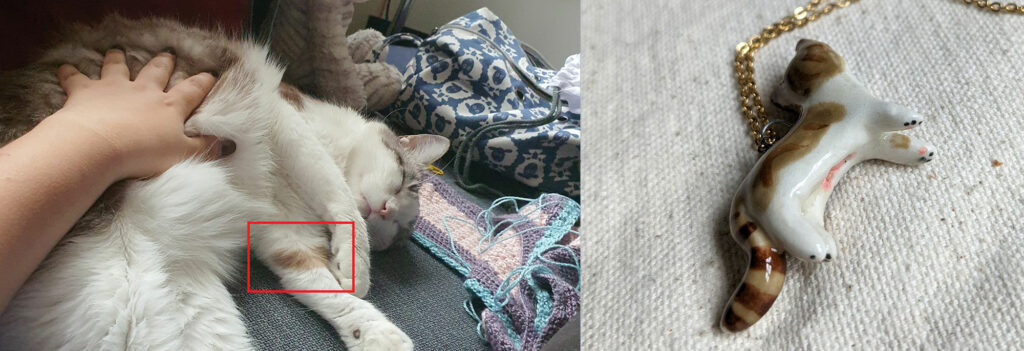
5 – Give all the information needed
In addition to your reference sheet, you might have some important information to share while commissioning art.
For example : it’s for a birthday and this commission is time sensitive, you’d like it to not be featured on social media or you’d like your dog’s scarf blue instead of the the one pictured that’s yellow. I’ll need to know that in order to either inform you about delivery time, put your commission ahead in the list or let you know that this color is ok or very hard to achieve.
While my style is more cartoony and cute, and leaves room for interpretation, other artists might need more details. It’s usually mentioned in the commission info page 🙂
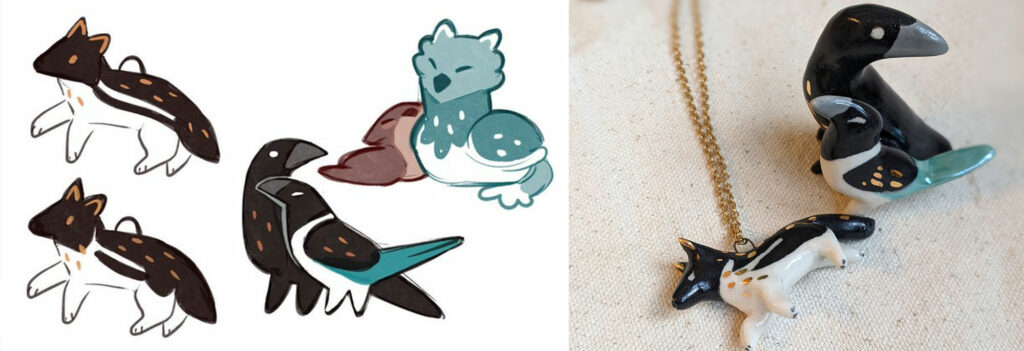
Art Commission Miscellaneous information
Art commission timeline
When commissioning art, be patient. If your artist of choice mentions a week to get back to you with a quote, 6 weeks to create your piece or a 2 weeks shipping time, that’s what they need. I will usually let my customers know if my schedule changes, it can happen both ways.
With ceramics, things breaks, kilns endure power outage, things don’t always run smoothly. Or they run extra smoothly and I’ll be able to ship in 3 weeks instead of 6. Or I might not be satisfied with the result and your piece will need a redo. There are a thousand different factors, so be patient and kind 🙂 We’re all doing our very best !
Depending on the medium, the commissioned artist might or might not send work in progress pictures. This is absolutely not mandatory. I usually don’t send work in progress for several reasons. First, I work with clay and try and avoid touching my phone while my hands are all muddy. I also try and avoid changes along the way because once my work had dried, there’s no changing it. By the time the exchange happens, the clay will be dry and this could be a frustrating experience. Meanwhile, a minor change often goes unnoticed.
Watercolor painting offers more ways to touch up or modify a piece. I will often show a sketch, ink and final colors steps to my customer. Changes can only happen at the sketch stage of this type of work.
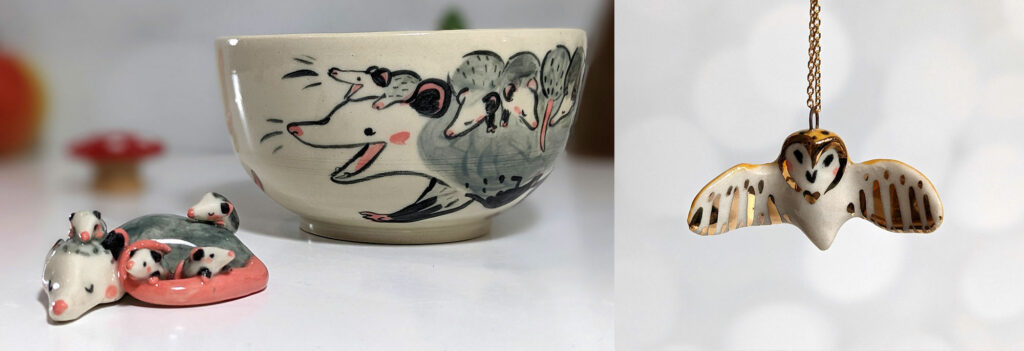
Art Commission Prices
Artists with open commission will often advertise their price list. I have a price table available at all times for different types of commissions.
Advertising your commission
Once you get your piece, or you gift your commissioned art to your loved one, every artist will absolutely love to know how it went ! Did you appreciate the packaging, was the piece up to your expectations ? I love nothing more than an e-mail with your feedback.
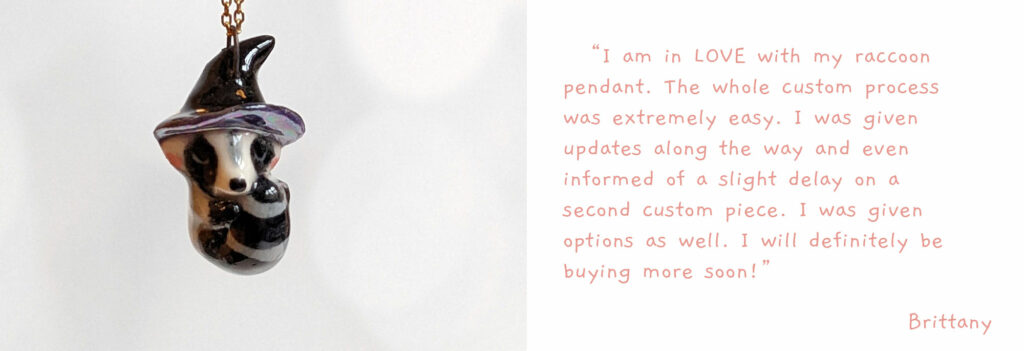
You can, of course, share your piece on social media and tag me, I’ll share your post or story.
Commissioning Artworks : Rights
One last common question about commissioning art is about the exploitation rights.
When you commission an artwork, the artist retains the exploitation rights of the piece. Which means that they can sell prints, pictures and reproductions, but the commissioner cannot. Unless stated otherwise by contract, this is how I work.
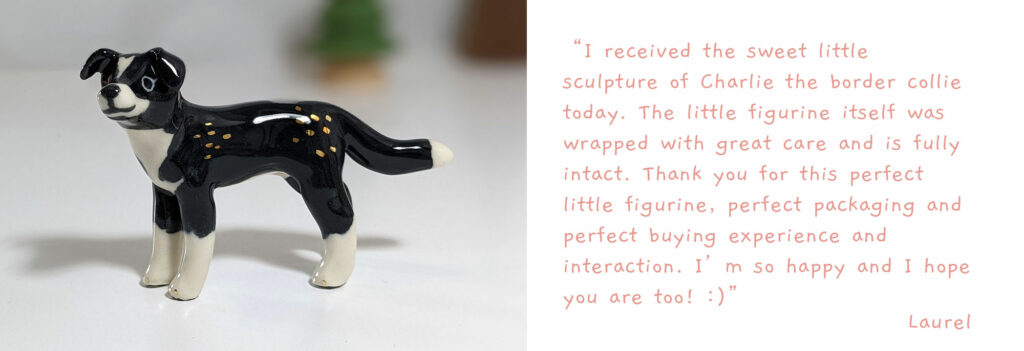
For ceramics, each piece is unique, they are not molded. I can redo a piece in some cases, but it will always be different, so there won’t be any reproduction of a given commission.
For commissioned illustration, I do not sell prints of them unless requested by the customer – if the original piece is lost or if it’s meant for a particular event like a birth. The commissioned work must not be commercially exploited by the customer either.
Your artist will usually make that clear on their commission page but if that’s not the case or if you plan on a commercial use of the work, you have to let them know so that they can charge accordingly.
Of course, each artist has their own set of rules so once again, refer to their info page !
Do you have any question or something I did not cover that seemed important ? After reading the info page, feel free to reach out to me !

